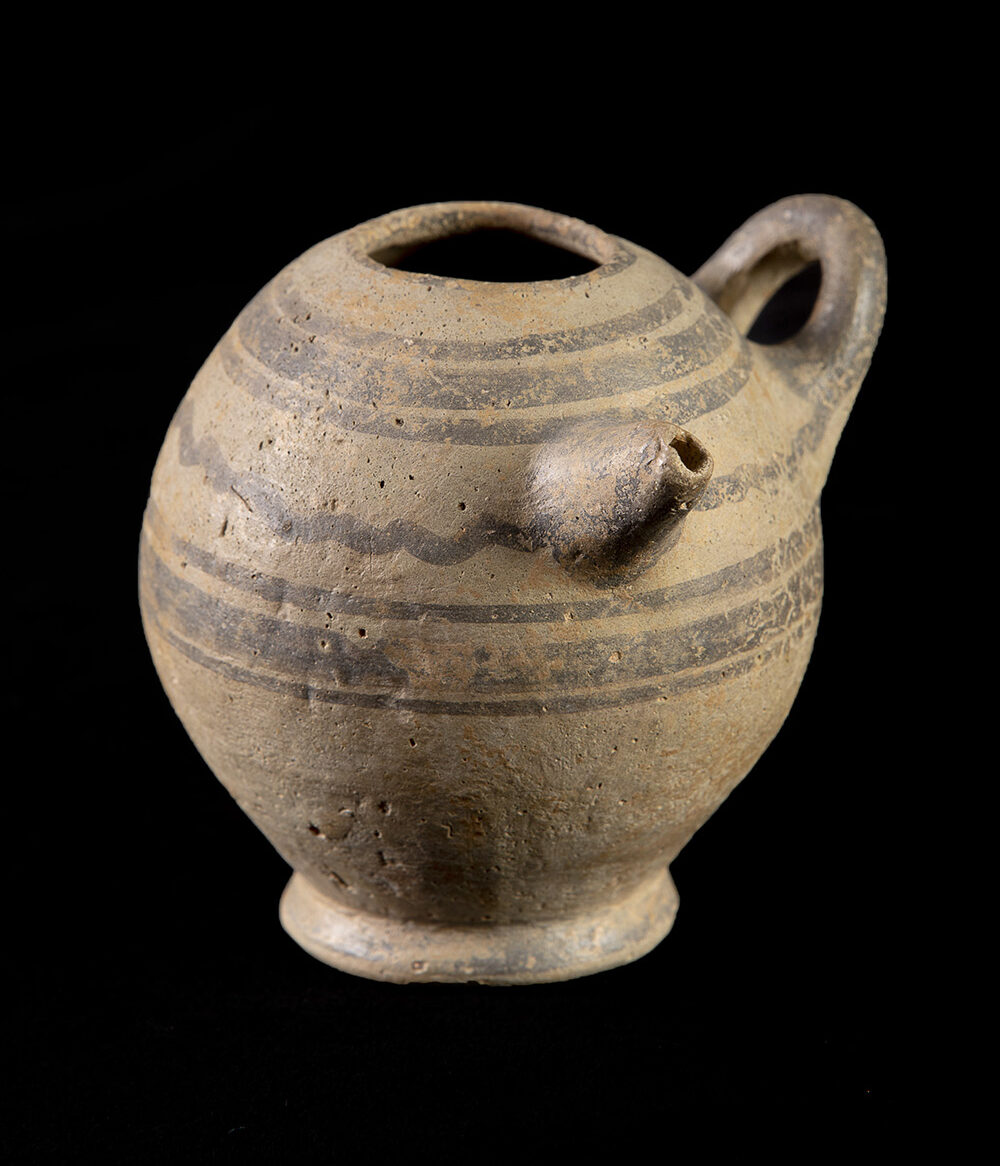
Pottery
6th c. BC
Empúries (L’Escala – Alt Empordà)
This small vessel is part of a set of Emporitan objects purchased by the Monuments Commission on 30 June 1896. It is 77 mm high with a horizontal handle and spout and decorated with brown to black stripes. It was made in Asia Minor, although it could be a local imitation. It dates back to the sixth century BC.
Vessels with similar handles and spouts are found in Greek, Punic and even Roman necropolises from at least the archaic period until the early Roman empire. Due to their shape, the French archaeological bibliography named them baby bottles. Punic models of a slightly different typology are called bazzoula, a term in Tunisian Arabic that means “breast” (of a woman), with a clear indication, in both cases, of a very specific function.
They are usually found in funerary contexts, often, but not exclusively, in children’s graves. In fact, their distribution in infant or adult graves varies according to the sites and there is no fixed pattern. In the Sainte-Barbre necropolis in Marseille, two were found in fourth-century-BC children’s graves, but none in adult tombs. In other places, however, they are much more numerous in the graves of adults than in those of children.
Those found in Greek children’s tombs are usually very small. Ours is less than 8 cm tall. Another, found in a child’s tomb at Empúries, is only 5 cm. As they are so small, several archaeologists interpret these vessels as indicative of a child’s status rather than as fully functional objects.
